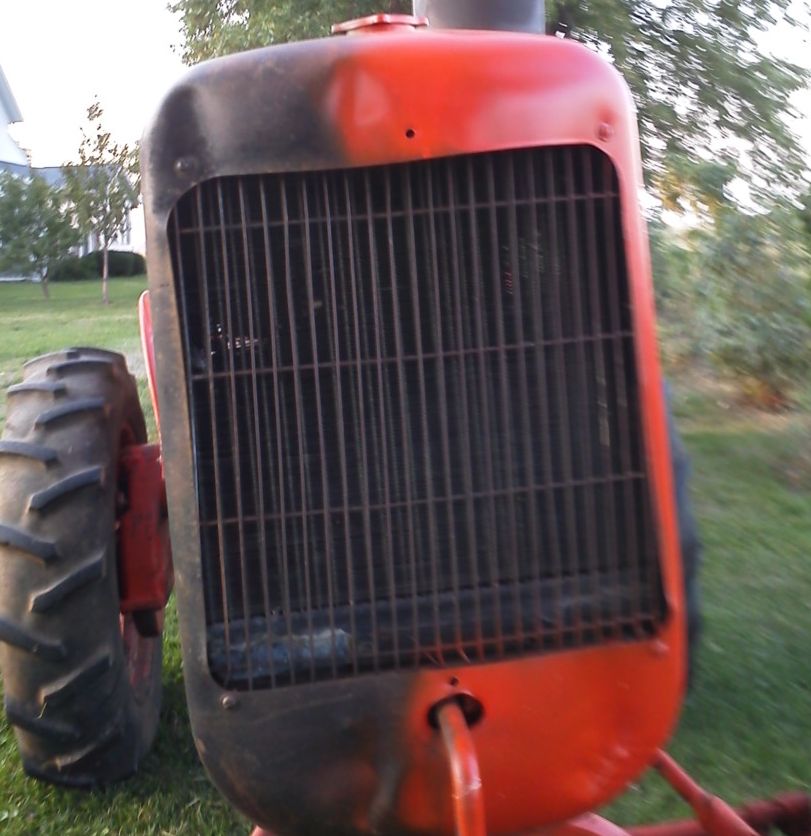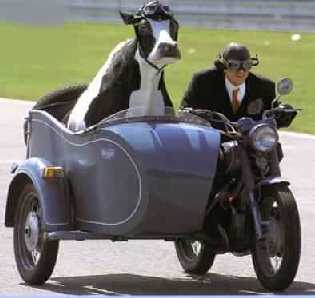| Author |
 Topic Search Topic Search  Topic Options Topic Options
|
SeanD17 
Bronze Level


Joined: 14 Sep 2009
Location: Iowa
Points: 22
|
 Post Options Post Options
 Thanks(0) Thanks(0)
 Quote Quote  Reply Reply
 Posted: 31 Jan 2011 at 10:30am Posted: 31 Jan 2011 at 10:30am |
|
I had the exact same symptoms with an Oliver 1650 after doing bunch of work on it and it was 100% a timing problem problem. I would definately look there first, if you been using it awile this theory is also supported because something mechanically that much too tight would have failed of at least be showing other signs of problem by now.
|
|
D14 N.F., Series lll D17 N.F, 3 Bottom Snap Coupler Plow, 4 Bottom Slat Snap Coupler Plow.
|
 |
|
Sponsored Links
|
|
 |
Gerald J. 
Orange Level

Joined: 12 Sep 2009
Location: Hamilton Co, IA
Points: 5636
|
 Post Options Post Options
 Thanks(0) Thanks(0)
 Quote Quote  Reply Reply
 Posted: 31 Jan 2011 at 12:29pm Posted: 31 Jan 2011 at 12:29pm |
|
Farm tractors don't spend their entire operating time with plow in the ground geared fast enough to pull the tractor down a bit off the governed speed. E.g. working at the maximum available power. Lots of farm work involves less load, like going from shed to field, mowing hay, raking hay, hauling wagons, cultivating, planting. Its these lightly loaded conditions where some more advance would improve throttle response, e.g. not stumbling with taking on a load or climbing a slope or anytime the load changes and the governor calls for more power.
Gerald J.
|
 |
mlpankey 
Orange Level

Joined: 13 Sep 2009
Location: Vols country
Points: 4580
|
 Post Options Post Options
 Thanks(0) Thanks(0)
 Quote Quote  Reply Reply
 Posted: 31 Jan 2011 at 12:53pm Posted: 31 Jan 2011 at 12:53pm |
|
If its a wd45 allis its all in at 800 rpms . So after 800 rpms there is no more advance. 300 or 400 rpm is starter cranking rpm . Safe to say the advance is a narrow rpm range for any field work .
|
 |
Gerald J. 
Orange Level

Joined: 12 Sep 2009
Location: Hamilton Co, IA
Points: 5636
|
 Post Options Post Options
 Thanks(0) Thanks(0)
 Quote Quote  Reply Reply
 Posted: 31 Jan 2011 at 4:03pm Posted: 31 Jan 2011 at 4:03pm |
|
Are you sure that's crankshaft speed or distributor speed? Most distributor specs are based on distributor speed, not crank speed.
Gerald J.
|
 |
mlpankey 
Orange Level

Joined: 13 Sep 2009
Location: Vols country
Points: 4580
|
 Post Options Post Options
 Thanks(0) Thanks(0)
 Quote Quote  Reply Reply
 Posted: 31 Jan 2011 at 4:23pm Posted: 31 Jan 2011 at 4:23pm |
|
I am certain its engine rpm . every recurve kit i have used is based on engine rpm .Are you certain?
|
 |
Brian Jasper co. Ia 
Orange Level

Joined: 11 Sep 2009
Location: Prairie City Ia
Points: 10508
|
 Post Options Post Options
 Thanks(0) Thanks(0)
 Quote Quote  Reply Reply
 Posted: 31 Jan 2011 at 5:10pm Posted: 31 Jan 2011 at 5:10pm |
|
Hmm, been to 7 county fairs and never saw anything like it. Up until the time distributors started going away for spark timing, every engine I've seen used crank speed for everything. Like someone's tag line is "fill the back of the shovel and the front will take care of it's self". Who cares about dist speed? The load is connected to the crankshaft, not distributor...
|
|
"Any man who thinks he can be happy and prosperous by letting the government take care of him better take a closer look at the American Indian." Henry Ford
|
 |
DaveKamp 
Orange Level Access


Joined: 12 Apr 2010
Location: LeClaire, Ia
Points: 5863
|
 Post Options Post Options
 Thanks(0) Thanks(0)
 Quote Quote  Reply Reply
 Posted: 31 Jan 2011 at 10:04pm Posted: 31 Jan 2011 at 10:04pm |
|
Back to the original question...
IF you find that ignition advance has no noticeable effect on starting when hot, the next thing I would suspect, is a coolant leak into the chambers. I'd THINK that you'd've noticed the coolant level falling, but making assumptions... well...
|
 |
Dave in il 
Orange Level


Joined: 22 Sep 2009
Location: Manville Il
Points: 1748
|
 Post Options Post Options
 Thanks(0) Thanks(0)
 Quote Quote  Reply Reply
 Posted: 01 Feb 2011 at 9:23am Posted: 01 Feb 2011 at 9:23am |
 DaveKamp wrote: DaveKamp wrote:
Back to the original question...
IF you find that ignition advance has no noticeable effect on starting when hot, the next thing I would suspect, is a coolant leak into the chambers. I'd THINK that you'd've noticed the coolant level falling, but making assumptions... well...
|
I doubt it's a mechanic al issue, after all these years a mechanical problem IMHO would have gottem worse. If your timing is set right and your timing advance in the distributor is working and it still starts the same, borrow a 12 volt battery and swap your 6 volt.
Don't turn on the ingnition just pull the stater, if it cranks the way you want, you can put a resister in front of the coil (or just get a 12 v coil), change your light bulbs and find a 12 volt alternator and it's cured.
Edited by Dave in il - 01 Feb 2011 at 9:26am
|
 |
mlpankey 
Orange Level

Joined: 13 Sep 2009
Location: Vols country
Points: 4580
|
 Post Options Post Options
 Thanks(0) Thanks(0)
 Quote Quote  Reply Reply
 Posted: 01 Feb 2011 at 10:04am Posted: 01 Feb 2011 at 10:04am |
|
Jm Take a chisel with a sharpened edge . make a reference mark on the distributor base and the housing in which it sets. Now then after having a reference mark to where the distributor was originally . Turn the distributor If my memory serves me correct clockwise to retard .to where the line you made on the distributor looks as if it would be beside the the mark on the base . Depending on how fat your line is it should take a minimum of 2 degrees of timing out the wider the line the more degrees it takes out or puts in. This will let you see if it starts easier due to ignition timing. I still however suspect the piston rings being the culprit by your description of it doing it more when hot. Reason being is I ran a stock starter with more battery voltage and fixed timing on my puller. . You can also check the distributors advance with a advance degree timing light . The advance should be all in at 800 engine rpms or by removing the distributor and making it advance the plates in your hand . I still suspect piston rings though.
Edited by mlpankey - 01 Feb 2011 at 10:04am
|
 |
DaveKamp 
Orange Level Access


Joined: 12 Apr 2010
Location: LeClaire, Ia
Points: 5863
|
 Post Options Post Options
 Thanks(0) Thanks(0)
 Quote Quote  Reply Reply
 Posted: 02 Feb 2011 at 12:23am Posted: 02 Feb 2011 at 12:23am |
|
ML... You thinkin' that mebbie the rings are warming up and binding due to lack of proper gap? That wouldn't sound out-of-place, but I wouldn't think it'd cause that much drag without having a profound effect on the color of the crankcase oil, and of course, long-term compression...
Here's another thing that may, or may not have substantiality...
The ground connection point... I was having starting probs with my '50 WD... regardless of conditions, it cranked slow, like the battery was dead. Had decent spark when hand-turning, but when the starter motor was running, it'd have miserable spark... at least, until the moment you released the starter switch.
After changing battery, cables, and starter switch, I decided to move the ground wire from where it'd been installed (on the transmission top cover, IIRC) to the starter housing somewhere, and it totally changed attitude.
Obviously, the conduction path from tranny top plate to starter wasn't as good as someone had hoped. At 6v, the starting circuit is VERY DEPENDANT upon low resistance to work properly.
|
 |
mlpankey 
Orange Level

Joined: 13 Sep 2009
Location: Vols country
Points: 4580
|
 Post Options Post Options
 Thanks(0) Thanks(0)
 Quote Quote  Reply Reply
 Posted: 02 Feb 2011 at 10:31am Posted: 02 Feb 2011 at 10:31am |
|
I think either a ring or two were cracked on installation or they are possibly gualded stuck to the ring lands possibly from butting together. may have came with the wrong set of rings per the pistons ring land depth in the kit even. I am not saying his grandfather did this . I am just saying that I have seen some rationalize that a tight ring end gap is better and that .010 long file fit rings were made to take up cylinder wear. Again this is general not implying his grandfather did or didnt .
|
 |









 Topic Options
Topic Options

 Post Options
Post Options Thanks(0)
Thanks(0)





 DaveKamp wrote:
DaveKamp wrote: